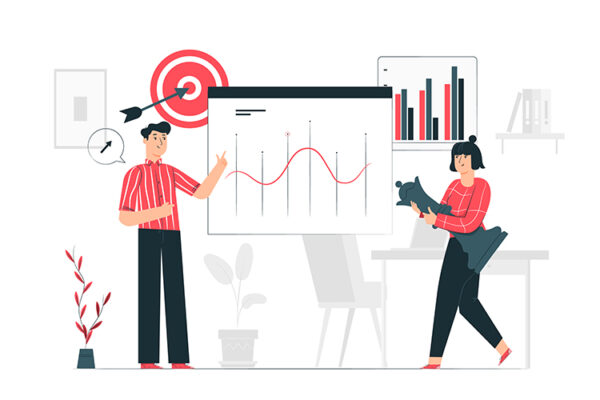Are you looking to boost your brand’s social media presence? Do you want to keep track of your competitors and industry trends? Look no further than social media listening and monitoring. In this comprehensive guide, we’ll cover everything you need to know about these essential tools for modern marketing.
What is Social Media Listening?

Social media listening, also known as social media monitoring, is the practice of tracking mentions of your brand, products, competitors, and industry on social media channels. It involves gathering data from various social media platforms such as Facebook, Twitter, Instagram, and LinkedIn to gain insights into how people perceive your brand and what they’re saying about you online.
Why is Social Media Listening Important?
Social media listening is essential for any business that wants to build a strong online presence. It allows you to:
- Understand your audience: Social media listening helps you learn about your target audience’s likes, dislikes, pain points, and preferences.
- Monitor brand reputation: By tracking mentions of your brand, you can address any negative comments or reviews in real time, preventing potential damage to your brand reputation.
- Stay ahead of your competitors: By monitoring your competitors’ social media activities, you can gain insights into their marketing strategies, new product launches, and customer feedback.
How to Implement Social Media Listening?
Implementing social media listening involves four main steps:
1. Determine Your Objectives
Before you start listening to social media conversations, you need to define your objectives. Are you looking to improve customer satisfaction, increase brand awareness, or monitor industry trends? Having clear objectives will help you choose the right tools and set up your searches effectively.
2. Choose Your Tools
There are several social media listening tools available, ranging from free to paid. Some popular options include Hootsuite, Sprout Social, and Aim Technologies. Opt for the tool that fits your business needs and budget constraints the most.
3. Set Up Your Searches
Once you have chosen your tool, set up your searches based on your objectives. Use keywords and hashtags relevant to your brand, products, and industry to track mentions on social media channels. You can also track specific accounts, locations, and languages.
4. Analyze Your Results
After setting up your searches, it’s time to analyze the data gathered. Look for patterns in sentiment, themes, and topics discussed on social media. Use this information to improve your marketing strategies, products, and customer service.
What is Social Media Monitoring?

Social media monitoring involves tracking and analyzing metrics related to your social media channels’ performance, such as engagement, reach, and conversions. It involves measuring the effectiveness of your social media campaigns and making data-driven decisions to improve your marketing efforts.
Why is Social Media Monitoring Important?
Social media monitoring is essential for businesses that want to make informed decisions about their social media strategies. It allows you to:
- Measure the effectiveness of your campaigns: By tracking metrics such as engagement, reach, and conversions, you can determine which campaigns are resonating with your audience and adjust your strategy accordingly.
- Identify growth opportunities: By analyzing your social media metrics, you can identify areas where you can improve your social media presence and reach more potential customers.
- Respond to customer feedback: Social media monitoring allows you to respond quickly to customer feedback, whether it’s positive or negative. By addressing customer concerns in real time, you can improve customer satisfaction and prevent potential brand damage.
How to Implement Social Media Monitoring?
Implementing social media listening and monitoring involves four main steps:
1. Choose Your Tools
There are several social media monitoring tools available, ranging from free to paid. Some popular options include AIM Insights, Buffer, and Hootsuite. Select the tool that is most appropriate for your business requirements and financial resources.
2. Set Up Your Dashboards
Once you have chosen your tool, set up your dashboards to track the metrics that matter most to your business. Depending on your objectives, you may want to track metrics such as engagement, reach, conversions, and sentiment.
3. Monitor Your Metrics
Regularly monitor your social media metrics to identify trends and areas for improvement. Use this information to adjust your social media strategy and make data-driven decisions.
4. Respond to Mentions
When someone mentions your brand on social media, it’s important to respond promptly. Whether the mention is positive or negative, responding shows that you value customer feedback and are committed to providing excellent customer service.
Case Studies: Real-World Success Stories
1. Nike’s “Dream Crazy” Campaign
Nike’s “Dream Crazy” campaign, which featured Colin Kaepernick, became a record-breaking social media success. By leveraging social media listening and monitoring, Nike tapped into the conversation around social justice and activism. The brand was able to track conversations in real-time, gauge public sentiment, and create content that resonated with its audience. The campaign went viral, with Nike’s stock hitting an all-time high, and it was hailed as one of the best marketing campaigns of the decade.
Influencer Quote:
“Nike knew exactly what their audience cared about. They were able to leverage social media listening to create the most powerful marketing message that resonated with millions.” – @GaryVee, Entrepreneur and Influencer
2. Coca-Cola’s Personalized Bottles Campaign
Coca-Cola’s “Share a Coke” campaign, which involved personalizing Coke bottles with popular names, was a social media sensation. Coca-Cola used social media listening tools to track mentions and engagement, allowing them to quickly identify which names and regions were most popular. As a result, they adapted their campaign in real-time, leading to a 7% increase in sales and a massive social media buzz.
Record-Breaking Impact:
Coca-Cola achieved over 500,000 tweets using the #ShareACoke hashtag within the first week of the campaign launch. It also sparked more than 6 million photos shared across social media platforms.
3. Tesla’s Use of Twitter for Brand Monitoring
Elon Musk and Tesla have become synonymous with social media, particularly Twitter. By using advanced social media monitoring tools, Tesla tracks real-time engagement with their followers, responds to product feedback, and capitalizes on viral moments. Tesla’s ability to monitor and react to customer feedback on Twitter allowed the company to see record-breaking levels of engagement, and it was instrumental in building the brand’s passionate following.
Record-Breaking Stat:
In a single day in 2021, Tesla’s Twitter account had more than 100,000 interactions after Musk tweeted about a new product feature.
4. The Ice Bucket Challenge: A Social Movement
The ALS Ice Bucket Challenge is one of the most successful social media movements in history, raising millions for ALS research. Social media monitoring tools helped the ALS Association track the campaign’s reach, analyze sentiment, and identify viral influencers who were driving the challenge’s success. The campaign went viral, generating over 2.4 million videos on Facebook alone.
Influencer Quote:
“The Ice Bucket Challenge became the social media benchmark for nonprofit campaigns. It showed the power of tracking social conversations in real-time to spark meaningful action.” – @BreneBrown, Author and Researcher
Conclusion
In conclusion, social media listening and monitoring are powerful tools that can help businesses of all sizes understand their audience, improve their brand reputation, and drive more traffic to their website. By leveraging the right social media monitoring tools and techniques, businesses can gain valuable insights into customer preferences and behavior, identify potential opportunities, and ultimately improve their bottom line.
If you’re interested in learning more about how social media monitoring can benefit your business, we encourage you to request a demo from AIM Technologies. With our comprehensive suite of social media monitoring tools, you can gain valuable insights into your target audience and make data-driven decisions that drive growth. Request a demo from AIM Technologies Now!




